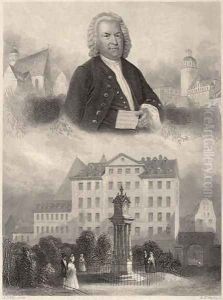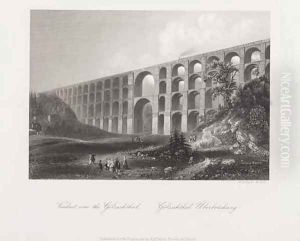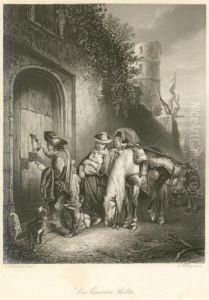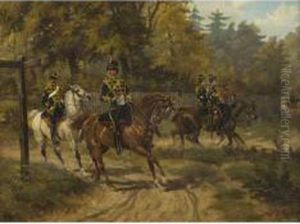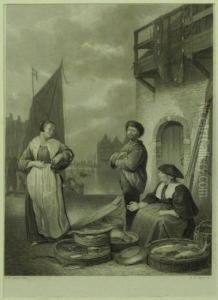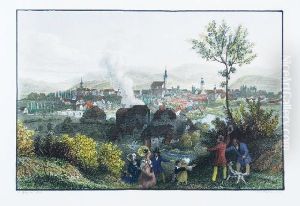Albert Henry Payne Paintings
Albert Henry Payne was an English artist and engraver, known for his works that often depicted architecture and landscapes, as well as for his literary illustrations. Born on December 14, 1812, in London, Payne developed an interest in art at a young age. Although details about his early education are scarce, it is known that his artistic talent became evident early on and he pursued a career in the arts.
Payne moved to Leipzig, Germany, in the 1830s, which was a center for publishing at the time. There, he established himself as an engraver and illustrator. He worked extensively for various publishers, producing illustrations for books and magazines. His engravings were widely appreciated for their fine detail and accuracy.
Throughout his career, Payne was particularly celebrated for his steel engravings, a popular medium during the Victorian era. These engravings were often used to illustrate books, capturing scenes from literature, portraits of famous individuals, and views of cities and landscapes. His work served not only as decoration but also as a means to disseminate images of British culture and the wider world to the public.
In addition to his engravings, Payne also worked on a series of illustrated books, such as 'Payne's Universum' or 'The World in a Pocket Book,' which provided a pictorial tour of various countries. His depictions of European cities and monuments played a significant role in shaping the Victorian public's perception of the continent's cultural heritage.
Albert Henry Payne continued to work as an artist and engraver until his death on May 7, 1902. His legacy includes a vast collection of illustrations and engravings that offer insight into the visual culture of the 19th century. His contributions to the field of illustration and printmaking remain significant, with many of his works still being appreciated by collectors and historians today.
